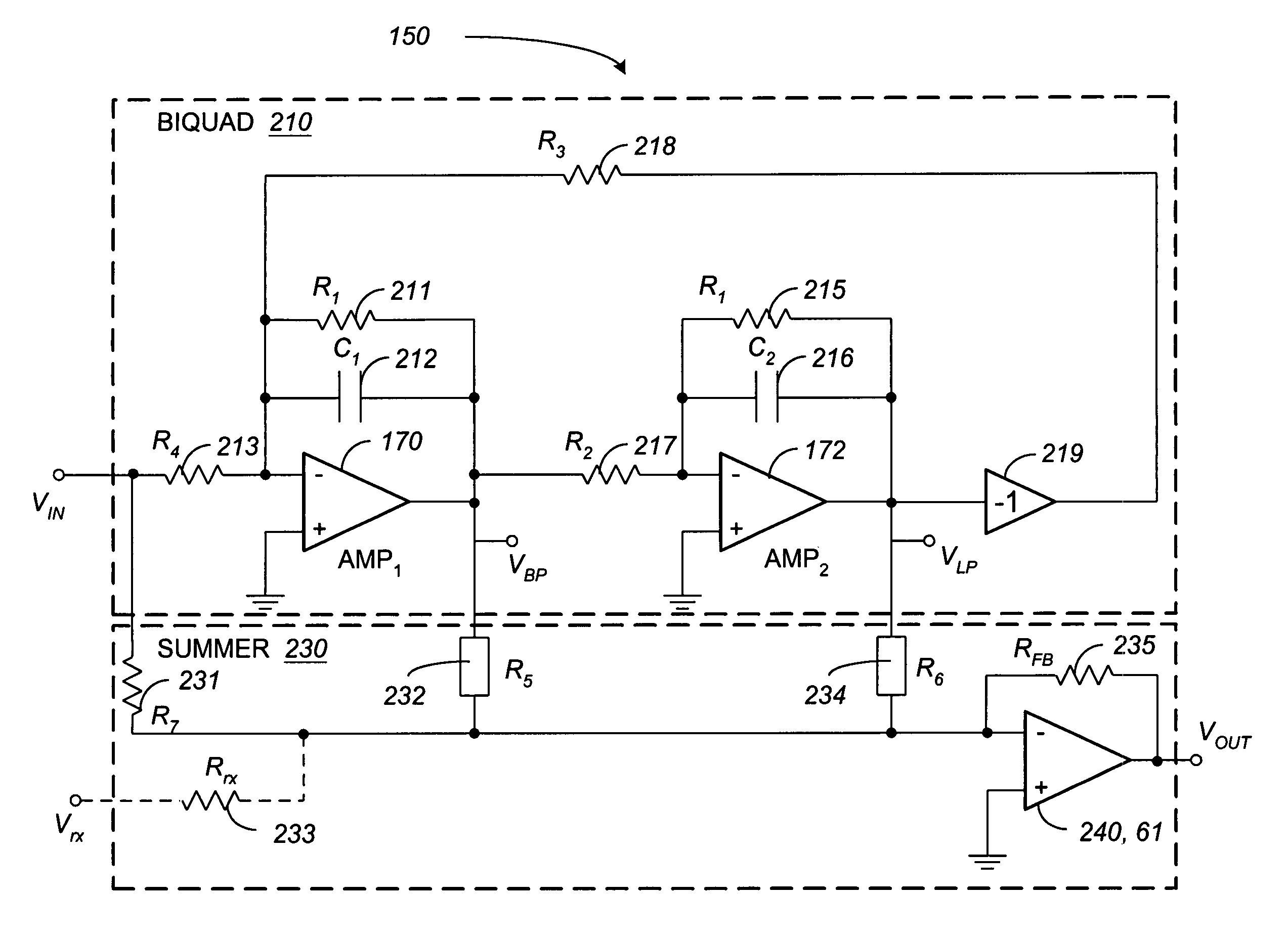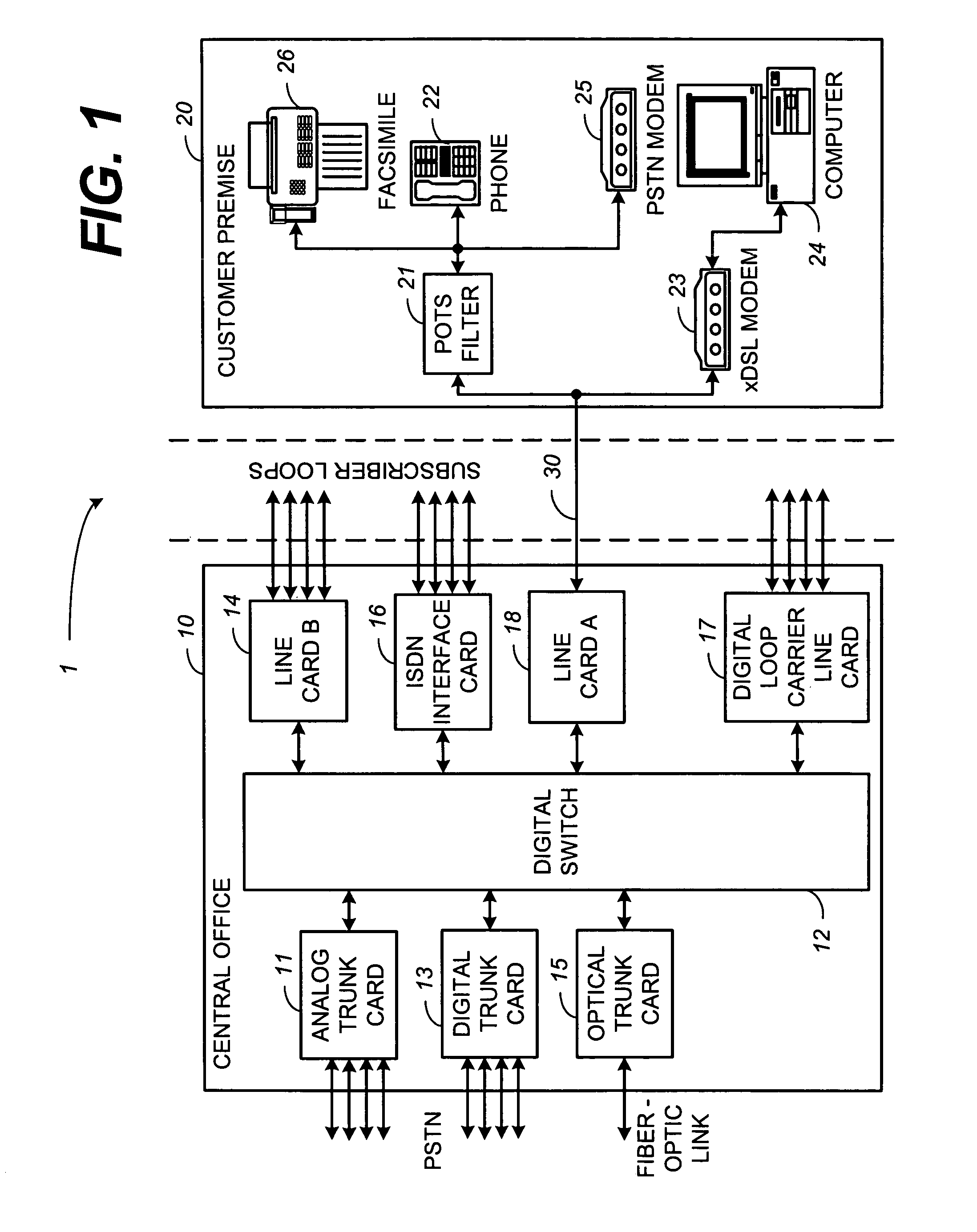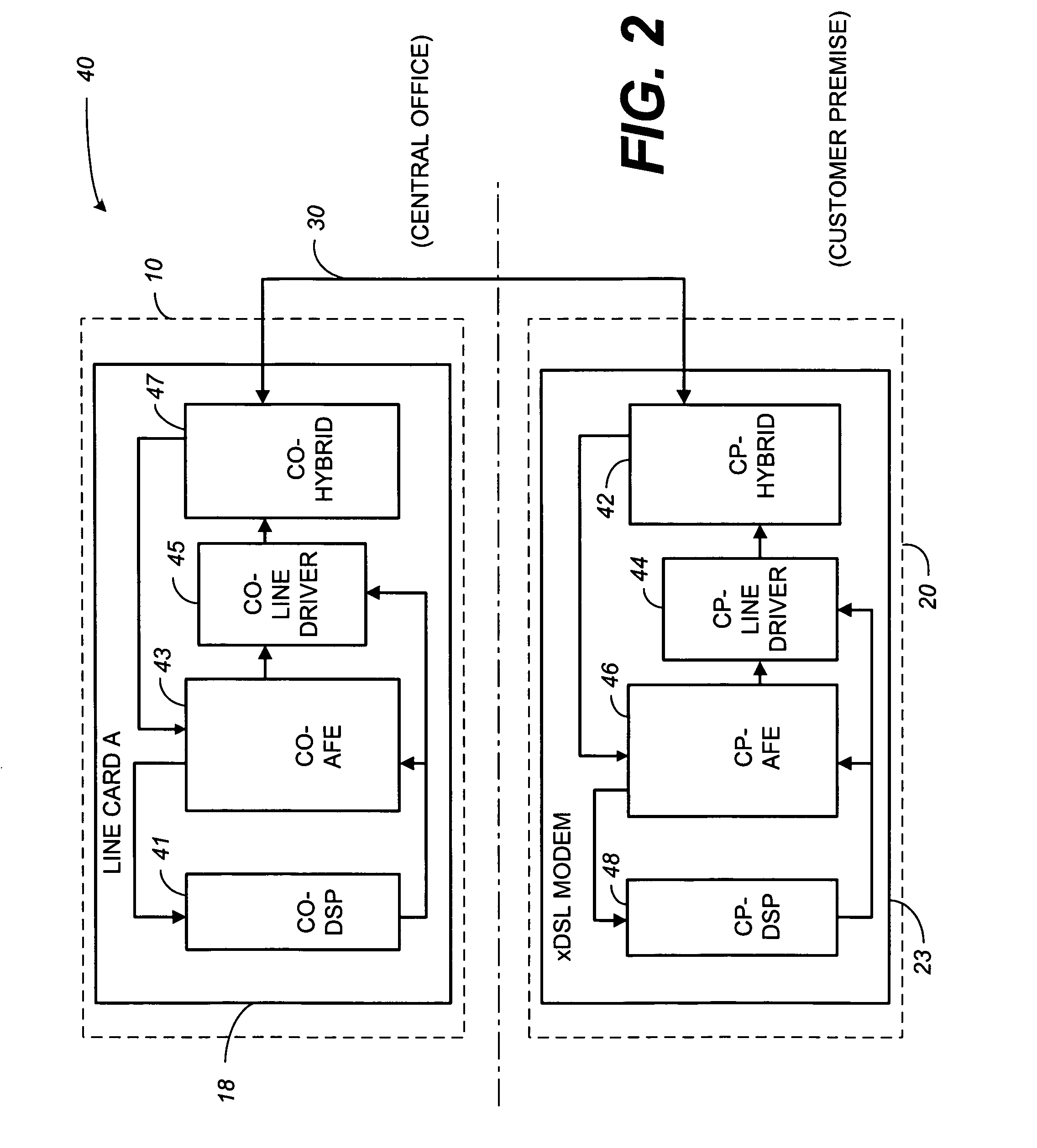Circuit and method for an improved front end in duplex signal communication systems
a communication system and duplex signal technology, applied in the field of high-speed data communications on a two-wire transmission line, can solve the problems of consuming significant computing resources, twisted-pair loop impedances often straying dramatically from “typical”, and the entire balance network does not offer the flexibility required to match the impedance, so as to reduce the reflection of transmit signals
- Summary
- Abstract
- Description
- Claims
- Application Information
AI Technical Summary
Benefits of technology
Problems solved by technology
Method used
Image
Examples
Embodiment Construction
[0032]The detailed description presented herein focuses on elements from the perspective of a CP located printed circuit line card within a xDSL communication system. This explanation and description, however, are by way of example only. Those skilled in the art will appreciate that the concepts and teachings disclosed herein may be applied to various front ends as may be found in a plethora of various communication systems.
[0033]Turning now to the drawings illustrating the present invention, wherein like reference numerals designate corresponding parts throughout the drawings, reference is directed to FIG. 1, which illustrates a xDSL communication system 1. Specifically, FIG. 1 illustrates communication between a central office (CO) 10 and a customer premise (CP) 20 by way of twisted-pair telephone line 30. While the CP 20 may be a single dwelling residence, a small business, or other entity, it is generally characterized as having plain old telephone system (POTS) equipment, such ...
PUM
 Login to View More
Login to View More Abstract
Description
Claims
Application Information
 Login to View More
Login to View More - R&D
- Intellectual Property
- Life Sciences
- Materials
- Tech Scout
- Unparalleled Data Quality
- Higher Quality Content
- 60% Fewer Hallucinations
Browse by: Latest US Patents, China's latest patents, Technical Efficacy Thesaurus, Application Domain, Technology Topic, Popular Technical Reports.
© 2025 PatSnap. All rights reserved.Legal|Privacy policy|Modern Slavery Act Transparency Statement|Sitemap|About US| Contact US: help@patsnap.com



